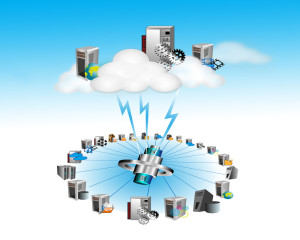 Even though hybrid cloud backup is growing in popularity, many companies still rely on a traditional backup appliance as the focal point of backup strategy. Realizing that the disc-to-disc backup method is more costly and inefficient, organizations are implementing hybrid backup methodology within their disaster recovery (DR) plans.
Even though hybrid cloud backup is growing in popularity, many companies still rely on a traditional backup appliance as the focal point of backup strategy. Realizing that the disc-to-disc backup method is more costly and inefficient, organizations are implementing hybrid backup methodology within their disaster recovery (DR) plans.
As a result of hybrid backup popularity, appliances that enable the burgeoning hybrid backup approach are being introduced. The appliance acts as the local backup, while the cloud acts as the replication location. There are challenges with this hybrid backup approach however.
Evaluating the issues within a “cloud first” approach will benefit decision-makers in IT strategy. A hybrid cloud backup strategy that centers on the cloud, rather than the appliance, will save time and money.
Option One: Appliance First
Hybrid appliances may not allow the enterprise to maximize the potential benefits of a hybrid cloud backup strategy for the following reasons:
Limited Storage – Using an appliance as the primary backup point means that the data limit is capped at the size of the appliance. Once the storage limit on the primary appliance is exceeded, they need to make additional investments, more appliances, storage volumes, and data removal (though the cloud portion of the backup schema may provide infinite storage). As a result, many organizations overestimate the amount of storage they need and make a large investment in hardware they won’t soon need.
Expensive Inefficiency – Two primary benefits of the cloud are cost savings and ease of management. By incorporating a physical appliance with a finite amount of storage as the first stop for data backup, organizations overwrite those advantages. Considering the disadvantages above, it’s wise to take a different approach to hybrid cloud backup strategy.
A Better Choice: Cloud First
A great DR plan should reap the full benefits of the cloud, while also leveraging the reliability of the appliance. This can be accomplished by building “cloud spillover” into the appliance – storing select data on the appliance and allowing the majority to stream into the cloud. This methodology allows data center teams to determine which data stays local, while also allowing fully capitalization on the scalability of the cloud.
As enterprises consider this transition, it is helpful to remember a few key points:
- Mindset is Key – Think of the appliance as the extension of the cloud, not vice versa.
- Smaller is Better – When it comes to appliance purchases, smaller is better for this “cloud first” approach. The data ultimately lives in the cloud and not on the device, so there’s no need to worry about running out of space.
- Don’t Settle – Remember that hardware with a defined space limit is ultimately not the best long-term decision for a growing data pool. It is easy to buy additional cloud space when needed, so it’s okay if there are a few initial bumps in the road while making the initial plans.
At the end of the day, a cloud first approach is the smartest option for a hybrid cloud backup strategy. The short-term and long-term savings for cost, infrastructure, and resources are unmatched by anything an appliance can provide.
While it’s not necessary to completely abandon your hardware, it is important to re-think the approach to hybrid cloud backup under the lens of “cloud first.” Talk to us today to see what will be the best fit for your business.